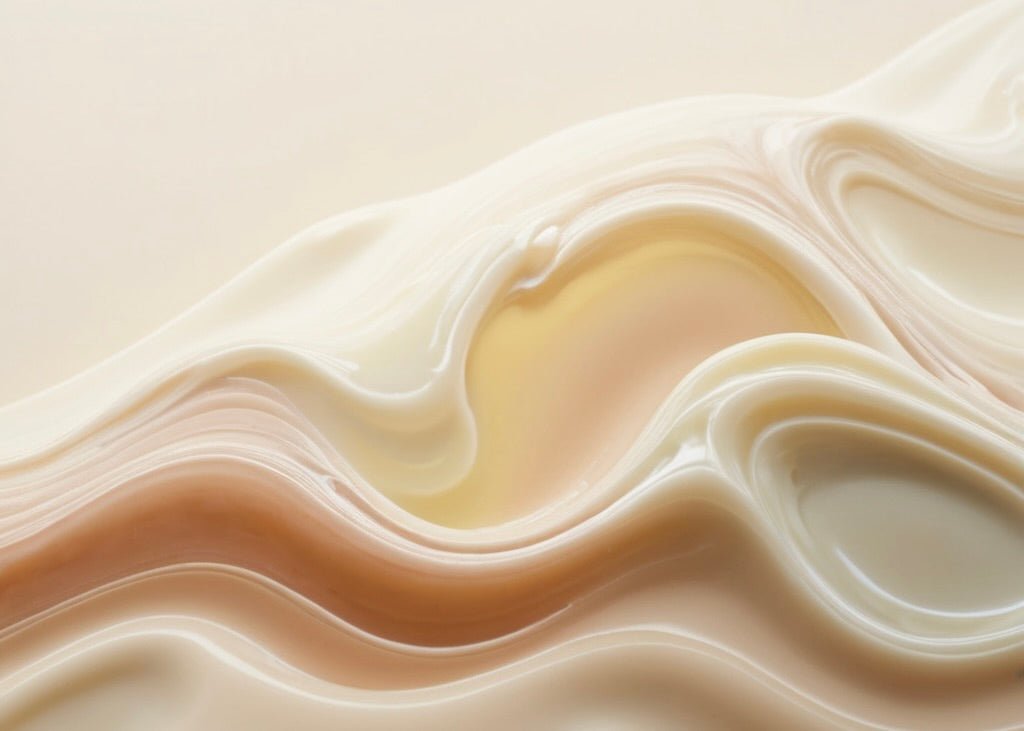
Emulsion vs. Moisturizer: Understanding the Differences
Taking care of your skin is essential to maintain its health and appearance. Two commonly used skincare products, emulsions and moisturizers, play a crucial role in keeping your skin hydrated and protected. Understanding the differences between these two products can help you make informed choices for your skincare routine. In this article, we will define emulsions and moisturizers, explore their key ingredients, discuss how they work, and provide guidelines for choosing the right product based on your skin type.
Defining Skin Care Terms: Emulsion and Moisturizer
What is an Emulsion?
Emulsions are lightweight and water-based skincare products that typically contain a mixture of oil and water. They are designed to deliver moisture to the skin while providing a light, non-greasy feel. Emulsions are formulated to penetrate deeper into the skin, making them suitable for all skin types.
One of the key benefits of using an emulsion in your skincare routine is its ability to hydrate the skin without leaving a heavy or sticky residue. This makes emulsions a popular choice for those with oily or combination skin, as they provide the necessary moisture without clogging pores or feeling too heavy on the skin. Emulsions are also known for their quick absorption, ensuring that the skin receives the hydration it needs without any lingering greasiness.
What is a Moisturizer?
Moisturizers consist of a combination of oil and water, with the primary purpose of providing hydration and sealing in moisture. They come in various forms, including creams, lotions, and gels, and are typically thicker in texture compared to emulsions. Moisturizers create a protective barrier on the skin's surface to prevent moisture loss, making them ideal for dry and dehydrated skin.
When choosing a moisturizer, it's important to consider your skin type and specific concerns. For example, those with dry skin may benefit from a rich, cream-based moisturizer that provides intense hydration, while individuals with oily skin may prefer a lightweight, oil-free formula that hydrates without adding excess shine. Additionally, moisturizers with added ingredients like hyaluronic acid or ceramides can help repair the skin's natural barrier and improve overall hydration levels.
The Key Ingredients in Emulsions and Moisturizers
Common Ingredients in Emulsions
Emulsions often contain a blend of humectants, such as hyaluronic acid and glycerin, which attract and retain moisture on the skin's surface. This hydration is crucial for maintaining skin elasticity and a youthful appearance. In addition to humectants, emulsions incorporate antioxidants like vitamin C and green tea extract, which help protect against environmental damage and promote healthy-looking skin by fighting free radicals. These antioxidants play a vital role in preventing premature aging and maintaining skin health.
Moreover, emulsions may include natural extracts and plant oils, such as chamomile and jojoba oil, that provide nourishment and soothing benefits. Chamomile is known for its calming properties, making it ideal for sensitive skin, while jojoba oil mimics the skin's natural oils, making it a great moisturizer for all skin types. These natural ingredients not only hydrate the skin but also deliver essential nutrients for a radiant complexion.
Common Ingredients in Moisturizers
Moisturizers commonly contain occlusive ingredients like shea butter and lanolin to lock in moisture, making them especially beneficial for dry skin. These occlusive agents create a protective barrier on the skin's surface, preventing water loss and maintaining hydration levels. Shea butter is rich in vitamins and fatty acids, providing intense nourishment, while lanolin is a natural emollient that softens rough skin and seals in moisture.
In addition to occlusive ingredients, moisturizers incorporate emollients, including oils like argan oil and coconut oil, to soften and smooth the skin's surface. These oils penetrate the skin deeply, restoring suppleness and improving overall texture. Many moisturizers also include ceramides and niacinamide, which strengthen the skin's protective barrier and help retain moisture for prolonged hydration. Ceramides are essential lipids that maintain skin integrity, while niacinamide, a form of vitamin B3, offers anti-inflammatory and brightening properties, making it a versatile ingredient for various skin concerns.
How Emulsions and Moisturizers Work
The Function of Emulsions in Skin Care
Emulsions work by delivering moisture and essential nutrients to the deeper layers of the skin. The water-based formula allows emulsions to be easily absorbed, providing hydration without leaving a heavy or greasy residue. They also help balance the skin's natural oils, making them suitable for both oily and combination skin types.
One key aspect of emulsions is their ability to create a protective layer on the skin, helping to shield it from environmental stressors such as pollution and UV radiation. This protective barrier not only keeps the skin hydrated but also enhances its resilience against external factors that can lead to premature aging.
The Role of Moisturizers in Skin Hydration
Moisturizers primarily function as a barrier on the skin's surface, preventing water loss and locking in moisture. The thick texture of moisturizers ensures long-lasting hydration, making them an excellent choice for dry and dehydrated skin. They also help to soften rough patches and improve the overall texture of the skin.
In addition to their hydrating properties, moisturizers often contain ingredients like antioxidants and vitamins that provide nourishment to the skin. These added nutrients can help repair and rejuvenate the skin, promoting a healthier and more radiant complexion over time. By incorporating moisturizers into your skincare routine, you not only hydrate your skin but also give it the essential elements it needs to thrive.
Choosing Between Emulsion and Moisturizer
When to Use an Emulsion
Emulsions are versatile skincare products that can be used in various situations. They are lightweight and absorb quickly into the skin, making them suitable for daily use, especially in humid climates or during warmer months. Emulsions work well for normal to oily skin types, providing sufficient hydration without clogging pores.
One of the key benefits of using an emulsion is its ability to deliver active ingredients deep into the skin due to its lightweight texture. This makes emulsions an excellent choice for those looking to target specific skin concerns such as uneven skin tone or fine lines. Additionally, emulsions often contain antioxidants and vitamins that help nourish the skin and protect it from environmental stressors.
When to Use a Moisturizer
If you have dry or dehydrated skin, moisturizers are the ideal choice. Use a moisturizer daily, especially after cleansing and toning your skin, to seal in moisture and provide lasting hydration. Moisturizers are also beneficial during colder months when the skin tends to become drier.
Moisturizers come in various forms such as creams, lotions, and gels, catering to different skin types and preferences. They create a protective barrier on the skin, preventing water loss and maintaining skin elasticity. Additionally, some moisturizers contain ingredients like hyaluronic acid and ceramides, which are known for their hydrating and skin-repairing properties.
The Impact of Skin Type on Your Choice
Emulsions and Dry Skin
While emulsions are generally suitable for all skin types, individuals with dry skin may require additional hydration. If you have dry skin, consider combining your emulsion with a moisturizer for maximum benefits. Look for emulsions with nourishing ingredients like macadamia oil or shea butter to provide extra moisture.
Moisturizers and Oily Skin
People with oily skin may be concerned about using moisturizers because of their heavier texture. However, it is essential to moisturize even if you have oily skin. Instead of using rich creams, opt for lightweight, oil-free moisturizers that won't clog your pores. Look for ingredients like tea tree oil or witch hazel that help control excess oil production.
By understanding the differences between emulsions and moisturizers, you can tailor your skincare routine to address your unique needs. Remember to choose products with natural and sustainable ingredients whenever possible, as they provide numerous benefits and are better for both your skin and the environment. Whichever option you choose, regular use of emulsions or moisturizers can help keep your skin looking healthy, nourished, and hydrated.














